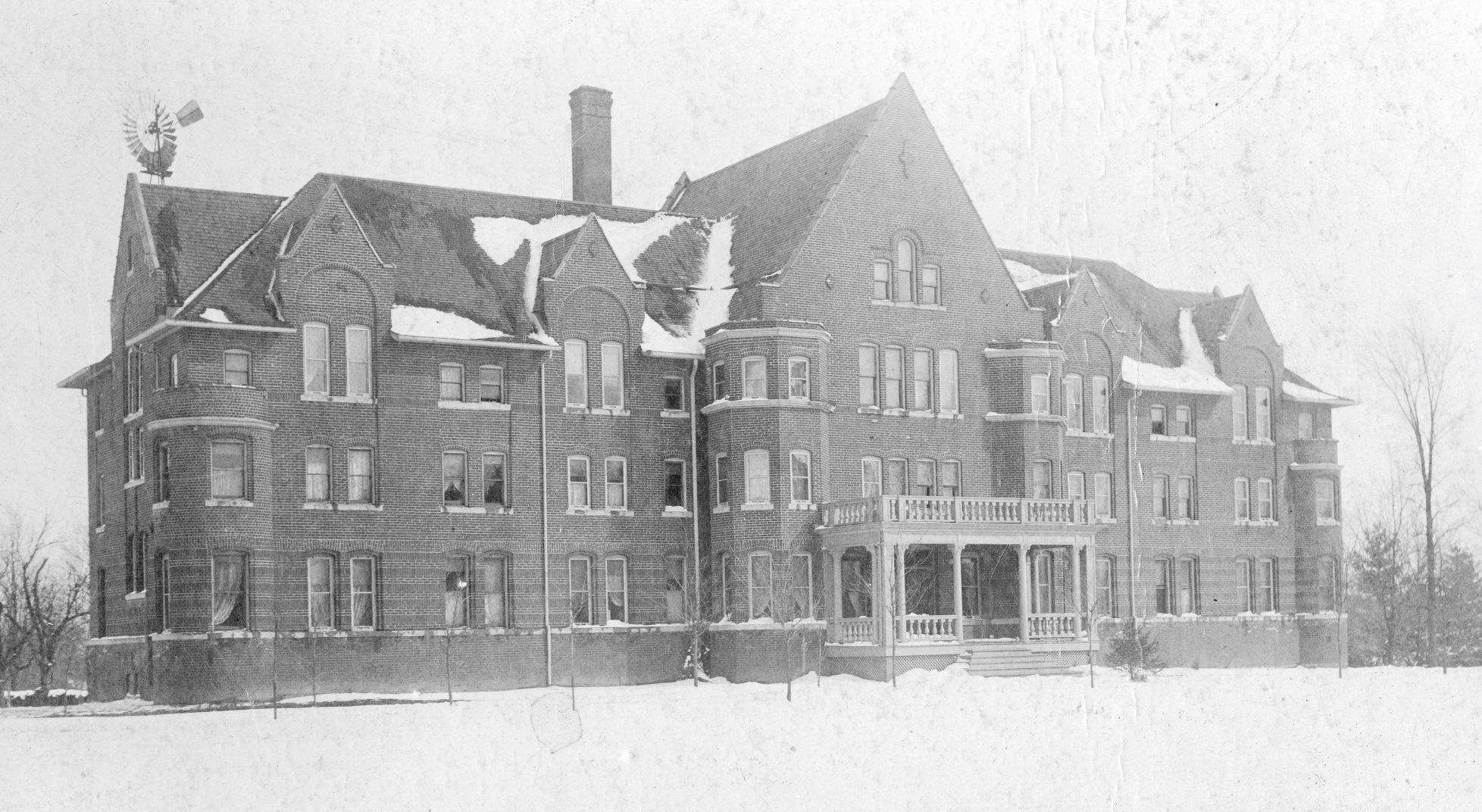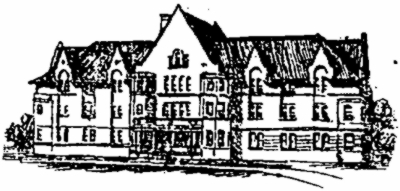For years this building was referred to as either Women's Building, Lady's Hall, or Red Castle by campus co-eds. Renamed Williston Hallabout 1933 in honor of John Payson Williston, inventor of indelible ink, friend of Jonathan Blanchard, and early benefactor of Wheaton College and Knox College. Williston, along with an addition also served as the dining hall. Students ate on either the main or lower level (the economy dining room). The frontporch was removed when a newer dining hall was complete. Upon its formal opening the following appeared in the Chicago Tribune (November 26, 1895, p.4):
FOR THE WHEATON COLLEGE WOMEN.
Formal Opening of the Building Erected by Admiring Friends.
Wheaton, Ill., Nov. 25.-- [Special] – The woman's building of Wheaton College was formally opened today. Donors and other invited guests partook of a dinner in the new dining-room at 6 o'clock. Impromptu speeches were delivered by various friends, a male quartet and an orchestra, consisting mostly of students, furnished music, and the exercises closed with a social gathering in the parlors and a rehearsal of the musical conservatory in the college chapel.
Probably 200 partook of the dinner.
Three years ago the trustees Of Wheaton College decided to add a woman's dormitory, but the hard times since then made the work of raising funds slow and difficult. Not until June last was the work commenced.
Mr. J. Q. Adams of Wheaton had several years ago promised to pay $10,000 towards the expense of erecting three buildings, but kindly modified the terms of his subscription from time to time to meet the possibilities in the case. When the building was fairly under way he paid his subscription, making the largest cash donation toward it.
Mr. M. M. Brown at Chicago, a former student of the college,volunteered to put up a building for one-half the contract price.
Plans were prepared by Patton & Fisher, architects, and by mutual consent the contract price was fixed at $35,000, of which Mr. Brown contributed one-half.
Changes were subsequently made in the plans increasing the expense; steam heat, electric lights, and other extras were put in, making the total cost nearly $40,000.
C. H. Case and R. J. Bennett of Chicago, David C. Cook of Elgin, George K Hopkins of Granville, J. C. Wheaton (now deceased), and many others contributed to the building, which is now fully paid for, but $6,000 had to be borrowed to make the last payments.
The building is a three-story brick structure with a front to the west of 140 feet. There is room for nearly sixty students in the building, besides society halls, parlors, matrons' and lady principals' rooms, and toilet-rooms. |

